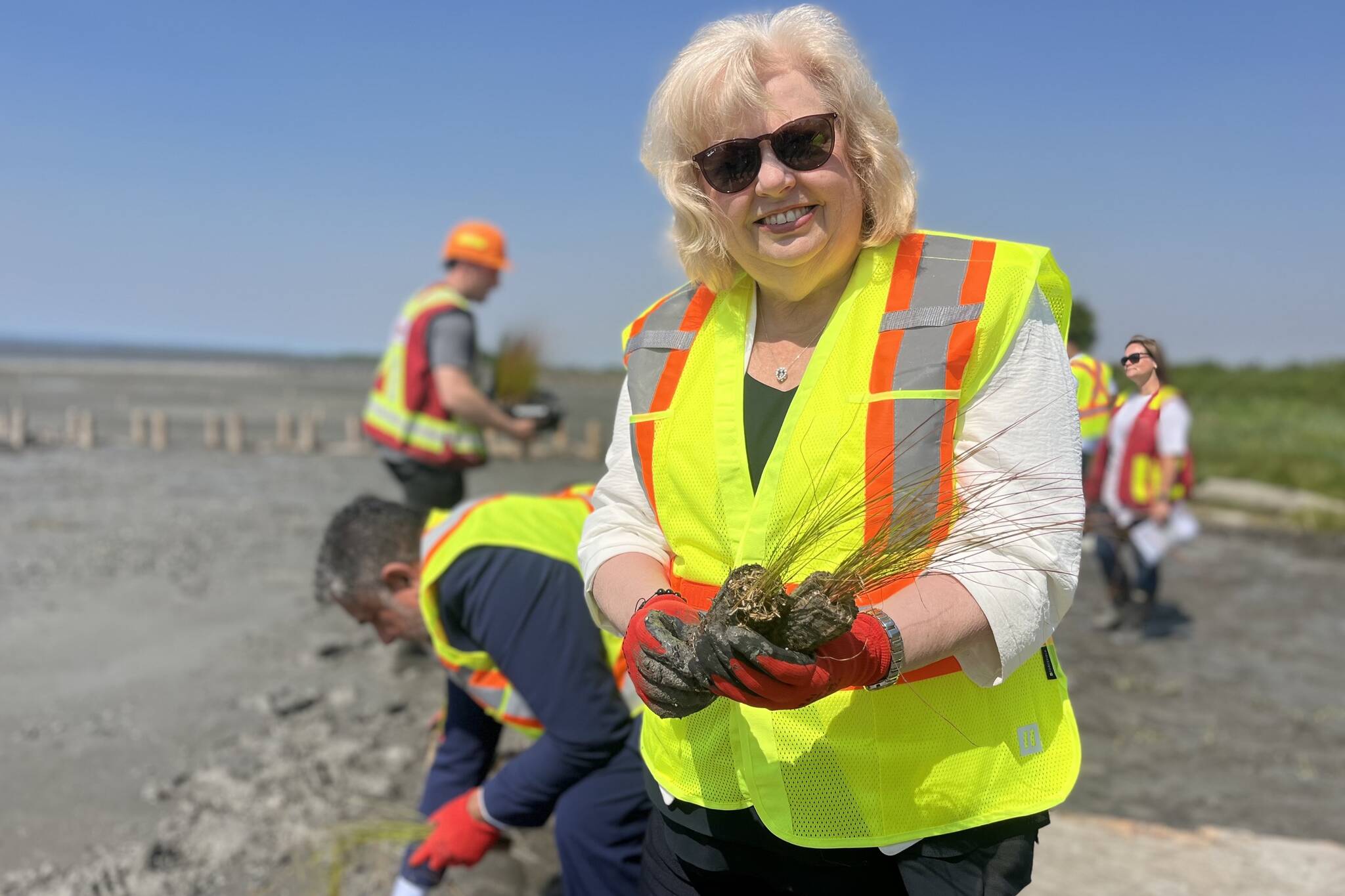An innovative, green approach to address coastal flood protection known as a living dike is underway in Surrey, attracting interest from across the country.
Surrey has partnered with the City of Delta and Semiahmoo First Nation on the Mud Bay Nature-based Foreshore Enhancements Project, with Semiahmoo First Nation involved in the project since its inception, playing a key role in informing and guiding the project that is situated within their traditional foreshore territory, a City release noted.
Home to internationally recognized wildlife and unique habitats including mud flats, eelgrass beds and salt marshes, Mud Bay’s salt marshes offer natural flood protection, improve water quality, store carbon, and support wildlife but are in danger of disappearing due to coastal squeeze from sea level rise.
The living dike will be created by adding sediment and planting native salt marsh species on the foreshore.
Over the past few weeks, construction has begun in preparing the site, placing sediment and installing dividers for the different plots being tested in the pilot, said City of Surrey senior project engineer Matt Osler.
“(The project) is building on the existing salt marsh, and extending it further into the ocean over the existing mud flat,” Osler explained.
“By making it a wider salt marsh, it will attenuate the wave energy to reduce erosion and reduce the height of the waves crashing against the shoreline, so it improves flood protection for today and also, makes the City more resilient with sea level rise in the future.”
The green approach means there will be much less impact on the environment than building the existing dikes higher and wider, he noted.
READ ALSO: Surrey awards $1.4M ‘Living Dyke’ contract
The project is valued at $1.4 million and is funded in part by the province and the federal government through the Disaster Mitigation and Adaptation Fund.
“I would like to thank our funding partners for making this project possible, and Semiahmoo First Nation for sharing their traditional knowledge on this innovative project,” said Surrey Mayor Brenda Locke.
“By working together, we are able to explore sustainable solutions to protect our communities and vital infrastructure from the impacts of climate change while supporting our environment including the ocean and our rich coastal ecosystem.”
The pilot project is garnering interest not only locally, but across Canada, Osler said, noting Canada has the world’s longest coastline.
“It’s not a unique challenge to Surrey – what we learn here will have value elsewhere in Canada as well,” he said.
The project will be carefully monitored “over a couple of storm seasons,” before fine-tuning and making potential adjustments to design, and then the the project will be rolled out over about a one-kilometre section of the shoreline, with the City following “an adaptive management approach.”
“Over that time, we’ll get to see how effective it is during storms and what aspects of the project work best,” said Osler.
For the first time, the City is using two new stabilization techniques, in addition to sand and rock berms, that repurpose waste materials.
“It’s the first time we’re using oyster shells – essentially a waste product from the canning process – we’re able to recycle those materials to use them for stabilizing the edge of the site from erosion,” Osler said.
“The other technology we’re using for the first time is called a brushwood dam – the idea came from the Netherlands – we use bundles of wood branches, a waste product from land clearing, for erosion control on the project.”
Extending the salt marsh has at least two other benefits, Osler said, in that it will help improve water quality and sequester carbon as well.
“The Mud Bay Living Dike project will serve as an example to coastal communities across the Fraser Delta and beyond as a more sustainable approach to adapting to climate change and sea level rise,” said Semiahmoo First Nation Chief Harley Chappell.
Learn more at surrey.ca/mudbay
@Canucklehedd
tricia.weel@peacearchnews.com
Like us on Facebook and follow us on Twitter.
